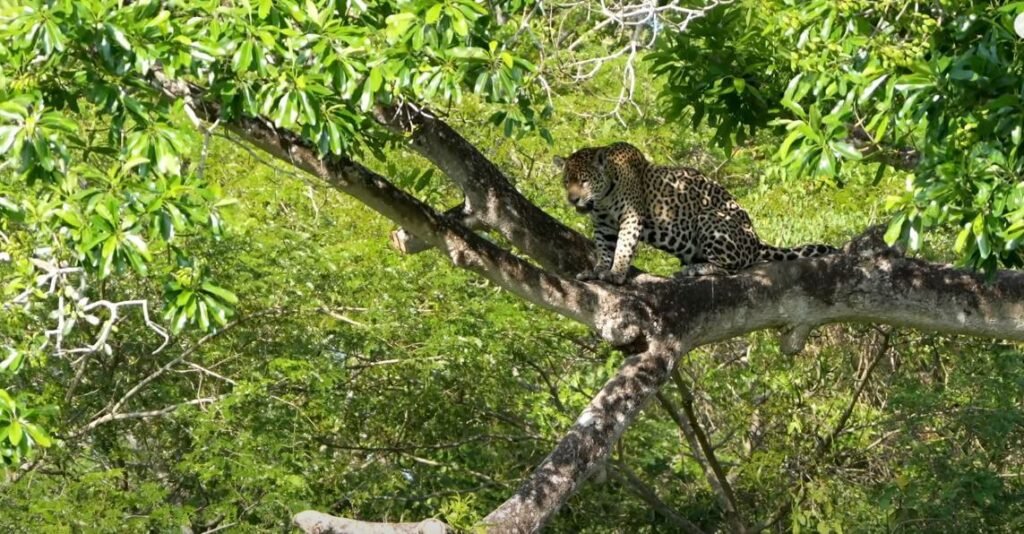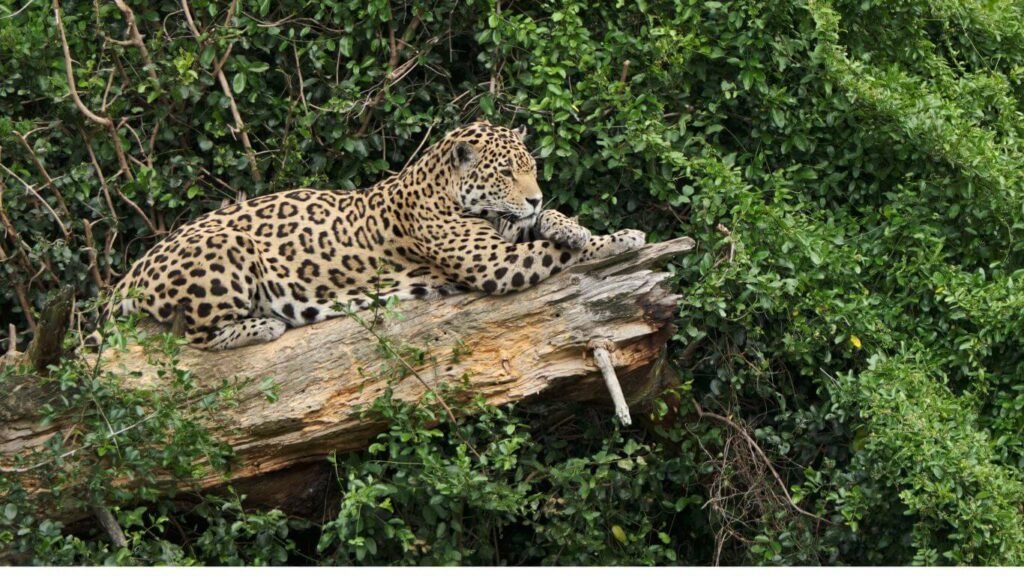The Pantanal is one of the most spectacular destinations for wildlife observation. It is home to the majestic jaguar (Panthera onca). If you want to experience the thrill of seeing this big cat in its natural habitat, choosing the perfect season to see jaguars is essential. This blog will guide you through the best times of the year to spot jaguars in the Pantanal, taking into account the weather, animal behavior, and other key factors.
The Perfect Season to See Jaguars: When is the Best Time?
The ideal time to see jaguars in the Pantanal is during the dry season, which lasts from July to October. During these months, water levels drop significantly, making it easier to access areas where jaguars often appear in search of food. The riverbanks become key hunting spots for these predators, greatly increasing the chances of sightings.
Reasons to Visit During the Dry Season
The dry season is considered the perfect season to see jaguars for several reasons:
- Better conditions for observation: As water levels decrease, jaguars concentrate in smaller areas, making them easier to spot.
- Exposed rivers and banks: Jaguars move along riverbanks in search of prey like caimans and capybaras, offering unique hunting spectacles.
- Stable weather: During these months, the Pantanal enjoys sunny days and dry weather, ideal for boat trips and land expeditions.
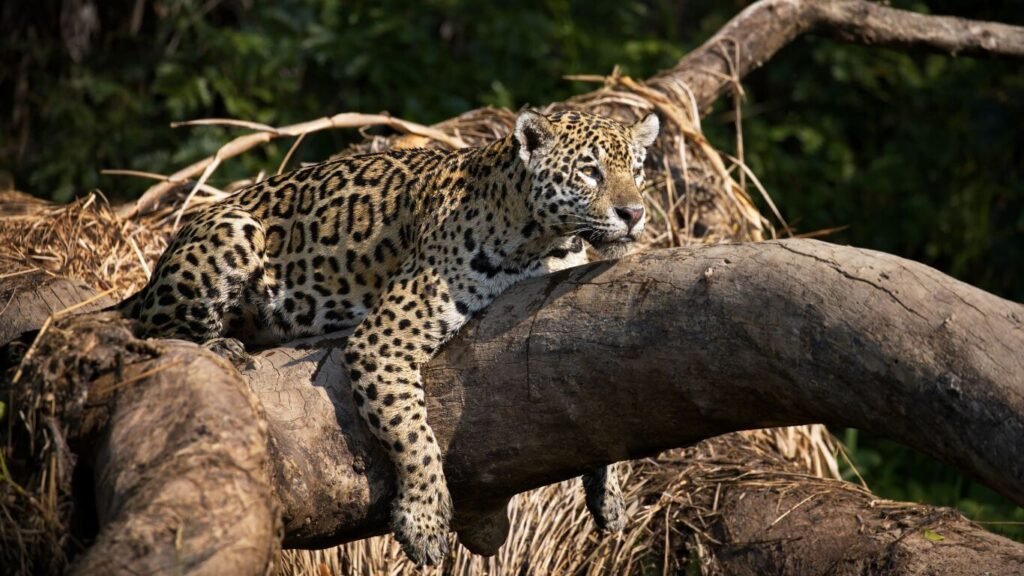
Ideal Weather During the Perfect Season to See Jaguars
The weather during the dry season is generally warm and pleasant, with temperatures ranging between 77°F and 95°F (25°C to 35°C) during the day. Nights tend to be cool, especially in September and October. Additionally, the lack of rain makes roads more accessible, allowing for more comfortable excursions by boat and 4×4 vehicles.
Jaguar Behavior During the Season
During the dry season, jaguars are more active along the rivers. They can be seen stalking their prey and resting in the shade near the sandy banks. This period coincides with the jaguar breeding season, offering the chance to see females with cubs, a truly unique and exciting experience.
Wet Season: Is It a Good Time to See Jaguars?
Although the wet season, which runs from November to March, is not the most recommended time to see jaguars due to the flooding that covers much of the Pantanal, it is not impossible to find them. However, tourism conditions become more challenging. Many areas are only accessible by boat, and jaguars tend to disperse due to the abundance of water.
Advantages of the Wet Season
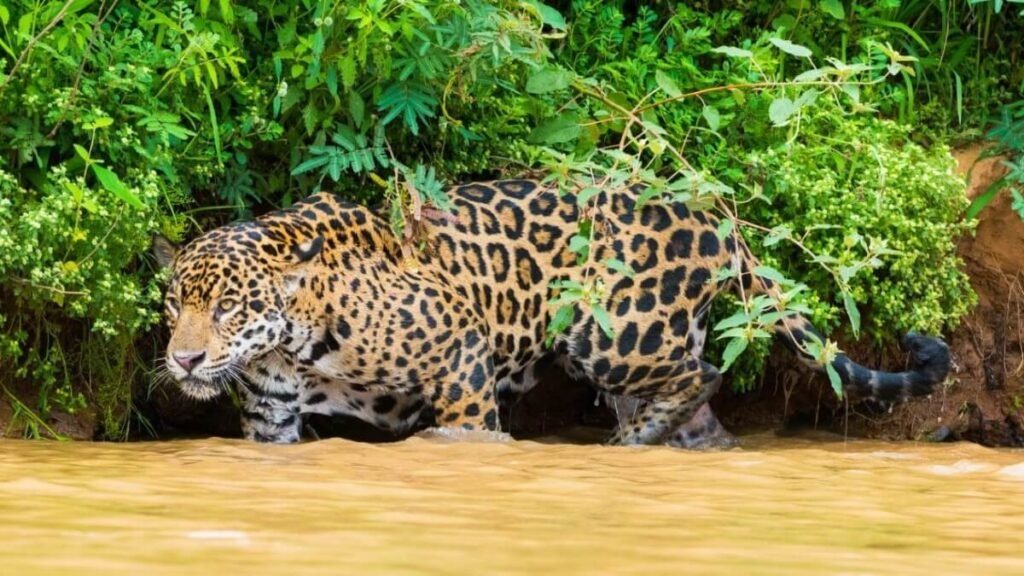
- Fewer tourists: For those seeking a more isolated experience, the wet season offers greater tranquility and fewer visitors.
- Abundant wildlife: Although jaguars may be harder to spot, this season is ideal for observing other species that thrive in the Pantanal, such as exotic birds and amphibians.
What Is the Best Time of Day to Spot Jaguars?
Dawn and dusk are the best times to observe jaguars, as they tend to be more active during the cooler hours of the day. Boat tours along the Cuiabá and Piquirí rivers, two of the main rivers in the Pantanal, are particularly effective during these times.
Recommendations to Make the Most of Your Trip
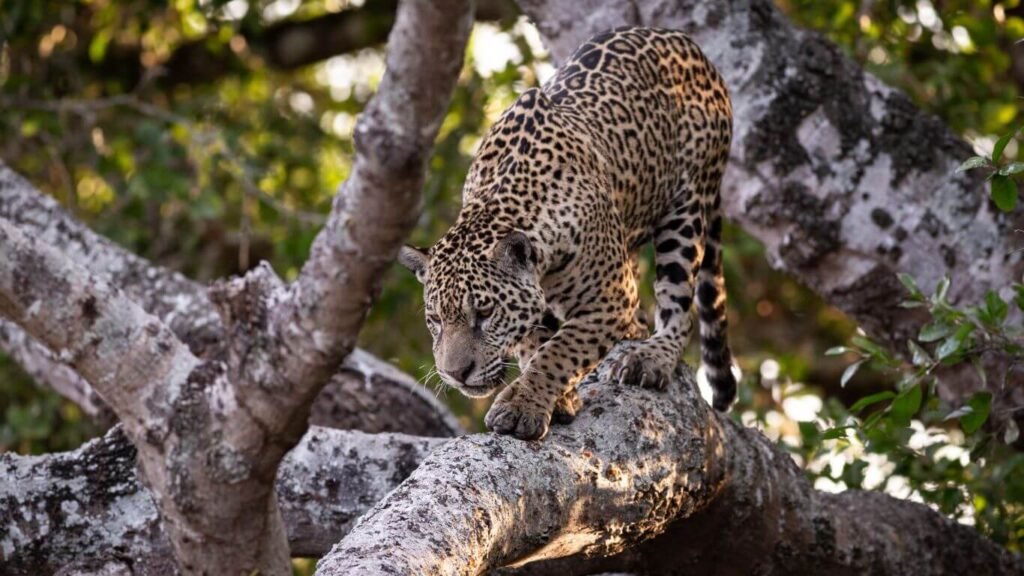
- Book in advance: Since the dry season is the most popular time to see jaguars, it’s advisable to book your tour and accommodation several months in advance.
- Choose experienced guides: Jaguar watching requires the knowledge of experts who understand the animal’s behavior and know the best places to find them.
- Boat trips: Most jaguar sightings occur from boats, so it’s essential to choose a tour that offers this type of transportation.
The dry season, from July to October, is undoubtedly the best time to see jaguars in the Pantanal. With warm and dry weather, low water levels, and active jaguars, the conditions are ideal for a successful sighting. If you want to experience the adventure of a lifetime watching these majestic felines, plan your trip during this period and enjoy an unforgettable experience!
Frequently Asked Questions About the Perfect Season to See Jaguars in the Pantanal
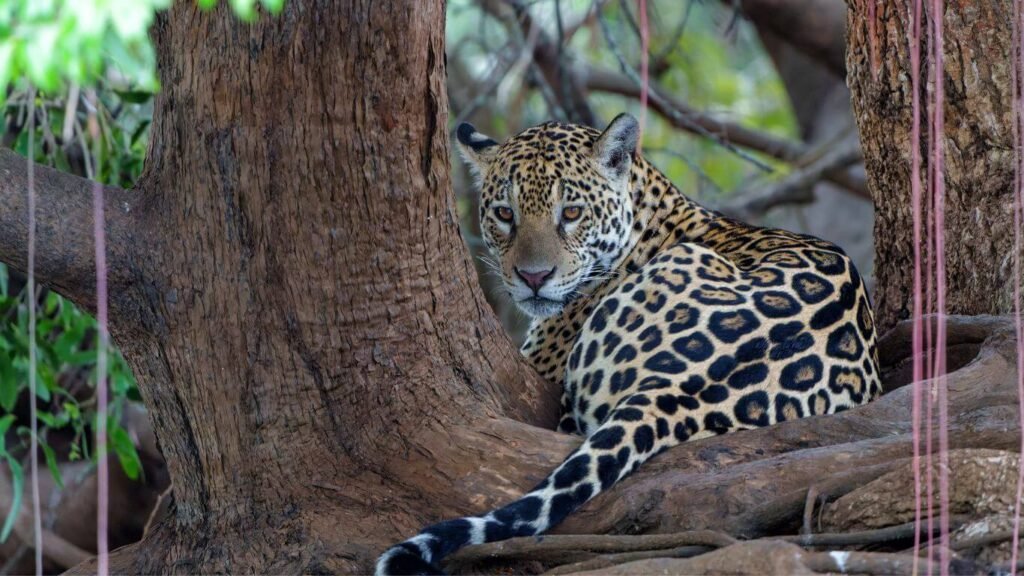
1. How long does the dry season last in the Pantanal?
The dry season in the Pantanal generally lasts from July to October, offering the best conditions for seeing jaguars.
2. What should I bring for a jaguar-watching tour?
Light, neutral-colored clothing, sunscreen, insect repellent, binoculars, a zoom camera, and comfortable boots are essential for your excursion.
3. Is it safe to take a jaguar-watching tour?
Yes, jaguar-watching tours are designed to be safe, with experienced guides who know the jaguar’s behavior and the terrain conditions.
4. How long do jaguar-watching tours last?
Tours typically last between 3 and 7 days, depending on the package you choose. This gives you more time to explore different areas of the Pantanal and increase your chances of spotting jaguars.
5. Do I need prior experience to join a jaguar tour?
No, prior experience is not necessary. Local guides provide all the information and guidance you need to enjoy the tour, even if it’s your first time in the wild.
6. What else can you see during a jaguar tour in the Pantanal?
In addition to jaguars, you can spot caimans, capybaras, exotic birds, anacondas, and monkeys. The Pantanal is one of the richest ecosystems in the world.
